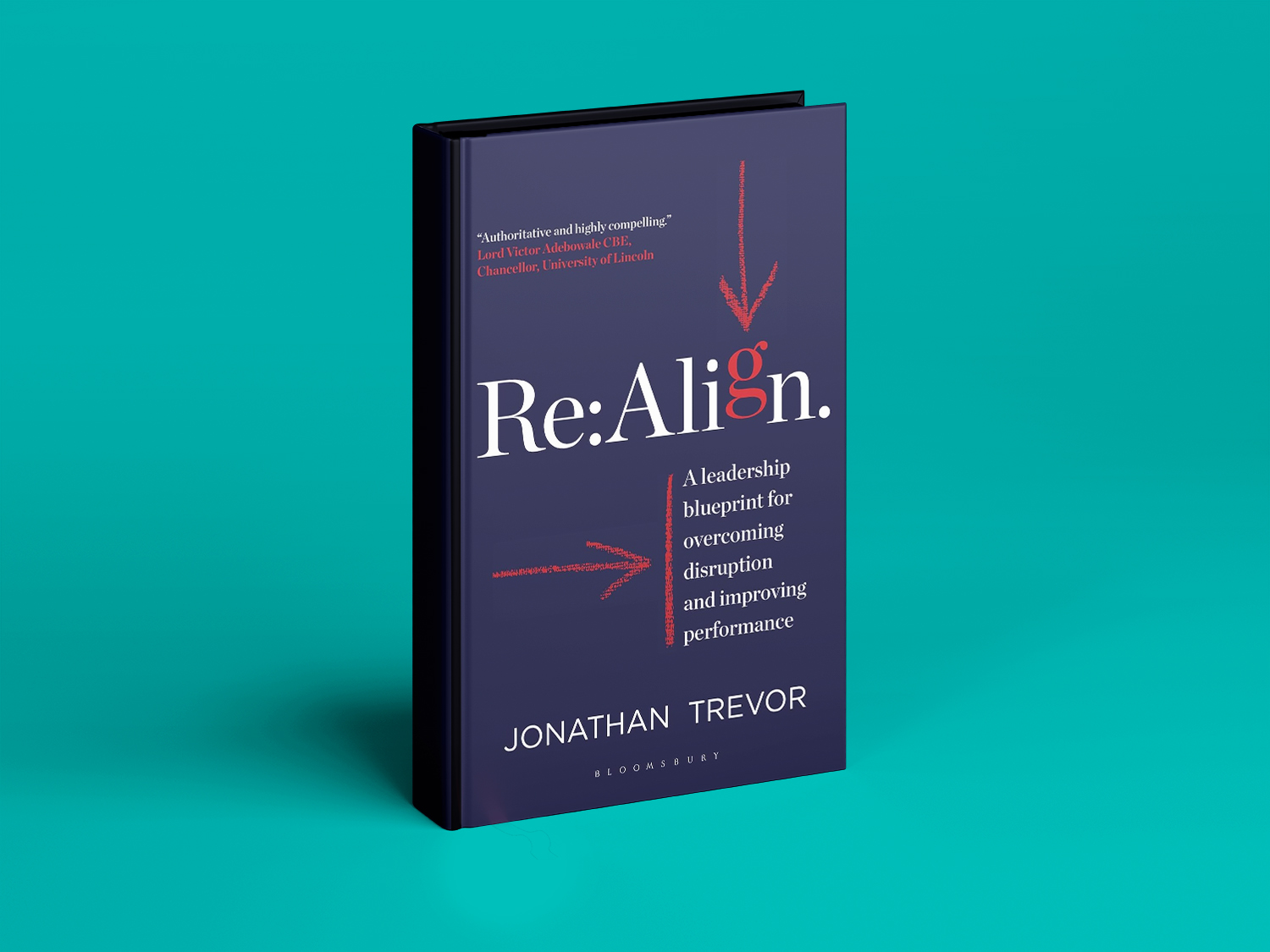‘Re:Align’ by Jonathan Trevor

There is no one-size fits-all approach to management. The best approach aligns to the unique context of each enterprise.
Alignment is analogous to fitness. The fittest stand the best chance of survival.
Arguably the greatest responsibility of every leadership team is to align their enterprise to improve its performance as much as possible.
- McDonald’s resembles a finely calibrated machine
- Microprocessor company ARM resembles an organic network
They appear to have little in common, yet both succeed due to the strength of their alignment.
Strategic alignment sees every enterprise as a value chain, consisting of business strategy, organisational capability, culture, structure, work processes, people and management systems.
Highly strategically aligned enterprises are more:
- purposeful
- customer oriented
- differentiated
- focused
- productive
- resilient
- engaging
Strategic alignment is a critical factor in why some enterprises thrive and others struggle or fail.
An enterprise’s purpose is its enduring north star to which all things should be aligned. All other links in the value chain are dynamic.
Trevor’s Strategic Alignment Framework sets out four approaches:
1️⃣ Efficiency Maximiser
Relies upon organisational stability and autonomy to efficiently exploit known market opportunities and create surplus value by maximising economies of scale. Focuses on how to do the same better and find improvements incrementally. Standardised offerings. (eg McDonalds).
2️⃣ Enterprising Responder
Relies on organisational agility and autonomy to respond flexibly and in innovative ways to market and customer needs. Able to offer customer centric new products and services. (eg Coutts & Co.)
3️⃣ Portfolio Integrator
Relies upon organisational connectivity and stability to maximise the synergies between diferent lines of business, geographies, teams and technologies. Large variety of complementary goods and services. (eg Build Your Dream)
4️⃣ Network Exploiter
Relies on organisational connectivity and agility to exploit the capability of its extended internal and external networks for product and service variety. Succeeds through platform led economies of association. (eg Airbnb, Uber)
Firms occupying the centre ground are not superior at anything. They risk energy sapping conflicts and compromises because of competing priorities and a lack of strategic focus.
What really gives an enterprise its competitive edge is the special attention paid to the alignment of its core organisational components:
- people
- structure
- culture
- processes
Efficient execution and superior customer agility require different people characteristics.
If any of the four core organisational components is in conflict with the others, the organisational architecture overall is likely to be a poor fit for purpose.
All enterprises are value chains that can only be as strong as their weakest link.